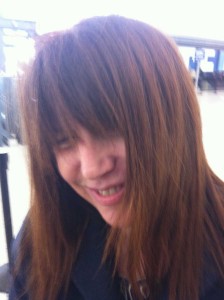![]()

Thus, two of the most well-defined colors running throughout the film are those found on Eagles’ uniforms – green and white. Or at least the older “classic pine green,” as Becker describes it, of old-school Eagle uniforms, compared to the newer teal of the 21st incarnations.
Part of the retro football look was meant to invoke a “believable working class Italian home,” and so Becker – while taking note of a plaid couch the director wanted to feature – found other colors, notably gold and blue, that worked well with older Eagles’ green.
That, in turn, helped inform the costuming decisions of Mark Bridges who worked off the unfolding palette devised by Becker and Russell, citing as an example actress Jacki Weaver – playing Dolores, the mother and wife of the two Pats, respectively, who is seen “wearing a mauve outfit that works with our color scheme.”
And those colors serve to unite the various sets – almost all of them practical locations – where the film’s story unfolds, from the house where DeNiro’s older Pat holds court on Sunday mornings and afternoons, invoking every bit of talismanic luck he can muster, to the neighborhoods where trick-or-treating and misunderstandings play out, to a tailgate party in the stadium parking lot on game day. “We completely created that tailgate party,” Becker recounts. And given how legendarily outsized Eagles’ tailgating is – with converted beer trucks and ambulances sporting grills and bars – it’s no wonder they had one character roll up in a converted school bus.
The bus belongs to Pat’s shrink, Dr. Patel – and his coterie of friends – and is done up in a panoply of both Indian and Philly-bred hues, a careful melding of sensibilities and character traits reflected in settings throughout the film.
“I loved shooting in Philadelphia,” Becker continues, noting that as a native New Yorker, she’d been there before for short visits. She describes it as “a city that’s in a lot of ways, lost in time.” Part of that is deliberate, as she cites a strong push to preserve the city’s architectural heritage.
And sometimes that heritage sneaks up on you, whether it was a building where the Constitution was hatched, or not. Such was the case in Philly suburban neighborhoods Ridley Park and Upper Darby, where she and Russell found some of the mid-century look they were after, including the home inhabited by Pat and Dolores, which Becker describes as “a little like walking into my grandmother’s house.”
That was the film’s biggest set, in terms of screen time and importance to the story. Becker worked to further refine the house by showing paint and wallpaper samples to Russell, as well as developing character motifs to undergird the ideas about color; for example, the dining room was Dolores’ domain, while living room was given over to Pat Sr., and football.
“David doesn’t like to use built sets,” she says, of all the scenes shot with numerous characters shoved into an authentic Philly living room. Sometimes, though, he had to, particularly for the space where Lawrence’s character, Tiffany, lives.
It is ostensibly a garage behind her parents’ house, which she converted to a dance studio to literally move through her grief, but while they found, and used “a house that David liked,” the garage was “too small to be believable as a dance studio.” So that, ultimately was built on a stage.
Though it was a built set, Russell still wanted it grounded in a certain garage-ness. So one of the walls, for example, has an indentation where a garage door would have been, had it been an actual remodel. And in order to “keep it a little girly,” Becker went to her “paint deck of ’80s colors,” and found one – Dusty Rose – which they used, or at least came very close to mimicking, to maintain that somewhat femme feel for the room.
Of course, sometimes the notion of practical and built sets combined in the real world, including the location used for the film’s finale, set in Diamond Row – a downtown area Becker describes as a “slightly seedy area.”
But this was also Diamond Row during the holidays, and Russell talked about evoking the look of the San Gennaro festival in Little Italy, with lights hanging – and beams cascading – over the streets.
So set decorator Heather Loeffler – who Becker has worked with for a dozen years, including on projects like Garden State and Shame – “sourced lights that were custom made.” To get the shots they wanted, the production had to convince the city to put up some of its holiday lights early, and while there was some initial resistance, the Diamond Row businesses liked the custom lights used by Becker and Loeffler so much that they decided to keep them.
The whole award season has been a keeper for Becker, as she’s also represented by her production design work in Hitchcock.
Becker describes herself as a “very character-based designer,” making her a perfect fit for a character-based director like Russell, (or even an outsized character like Hitchcock himself).





